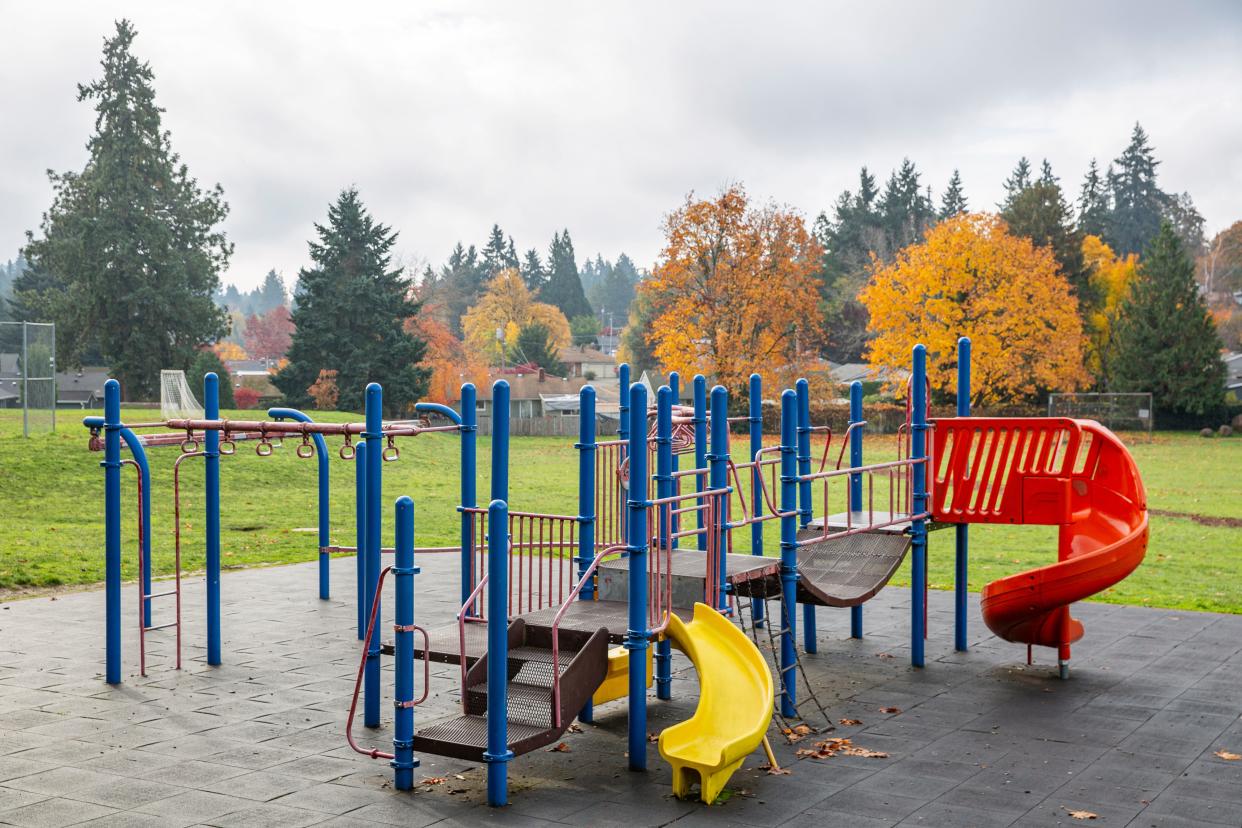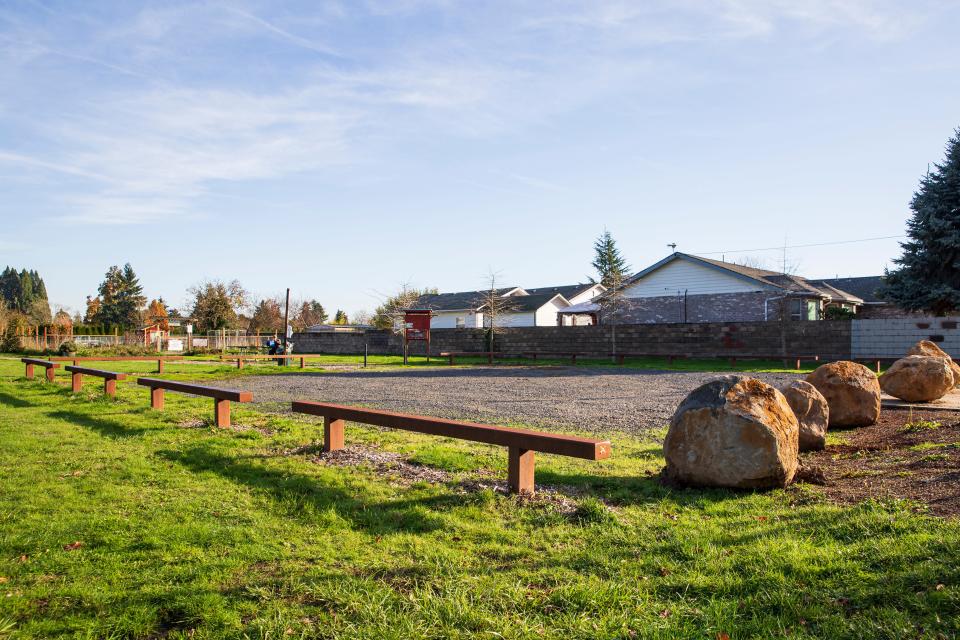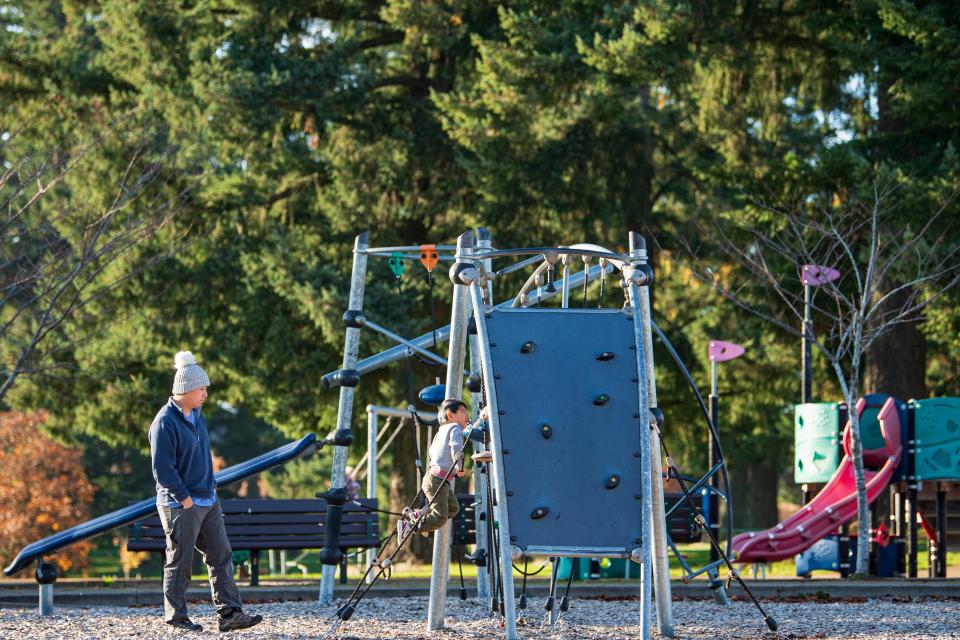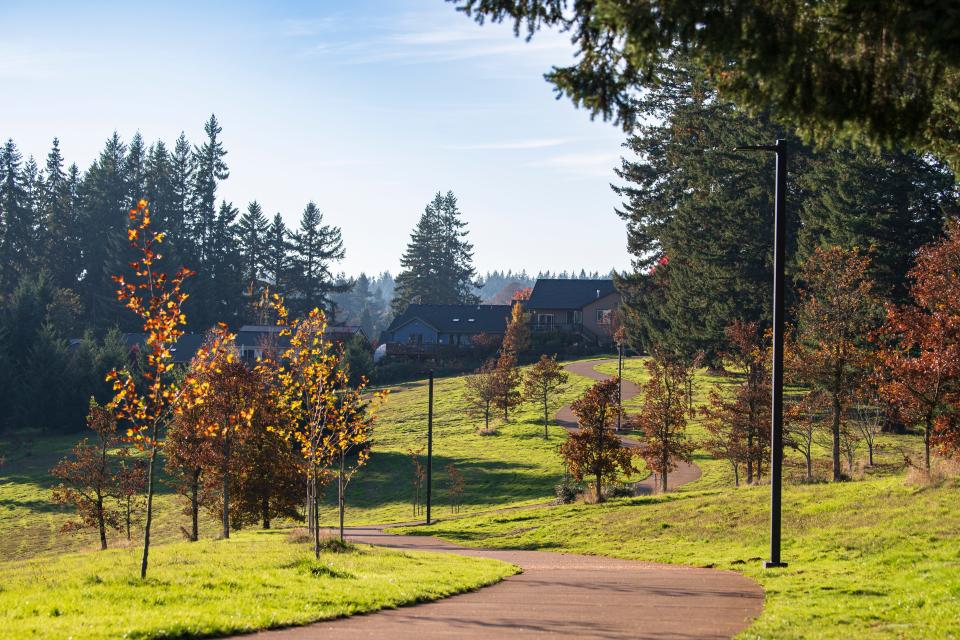When a Salem neighborhood relies on a school park, who pays for it?

More than half of Salem residents do not live within easy walking distance to a park.
An estimate by city parks planning staff using U.S. Census Data found 51% of residents did not live within a 10-minute walk from the nearest city, neighborhood or community park.
M embers of Salem City Council, Salem Parks and Recreation Board, Parks Planning staff and students celebrated National Walk to a Park Day Oct. 10 with a walk from Liberty Elementary School to Wendy Kroger Park in south Salem.
More: Salem pledges to put a neighborhood park within a 10-minute walk of every resident
Fifth graders from the school joined city leaders for the half-mile walk to the neighborhood park.
"Everyone deserves to have a green space," Dylan McDowell, chair of the city's Parks and Recreation Advisory Board, said at the event.
Parks have not always been spread equitably through the city, he added. Lower-income areas traditionally have fewer parks and less tree canopy. Neighborhood parks like the one visited during the event are not as common in some areas in east Salem, for example.
In neighborhoods lacking safe access to a city or neighborhood park, many rely on school playgrounds as outdoor spaces for their families. Public schools typically make their playgrounds and outdoor facilities available for public use outside of the school day.
On a given summer evening at Chavez Elementary School, dozens of kids, teens and adults stopped by the schoolyard, playing pickup games of basketball, running around the track and chasing each other around the playground.
The location is the only walkable park for many in the neighborhood. Brown Road Park, an undeveloped park with no playground, is about a mile away. McKay School City Park is even further.

Some school playgrounds are old and in need of replacement. The Morningside Parent Teacher Club has been working since 2018 to replace the aging playground at the south Salem elementary school.
"Morningside students and the PTC have been working very hard to raise funds to replace a play structure at our school that's unsafe and is falling apart," organizers wrote in a 2023 GoFundMe post. "We have raised $46,805.61 but we needed at least $60,000.00 by the end of June to have this structure installed over the summer."
After not meeting the fundraising goal in June, the group had to start the process over again.
"That means the kids who started fundraising for this playground as kindergarteners will not get to enjoy the new structure by the time they leave for middle school," organizers said in the post.
Salem-Keizer Public Schools officials said that historically, school playgrounds have been added or replaced wholesale through fundraising activities and various parent-teacher groups. The district has funded the replacement of some individual pieces of play equipment due to safety concerns over the years.
Parent participation can vary drastically depending on the school. Some parent-teacher groups have their own websites, social media pages with hundreds of followers and regular fundraisers. Others are inactive or struggle with participation.
Parent groups, including PTOs, PTAs and booster clubs have been shown to benefit students, raise money for underfunded programs at school and strengthen community relationships.
A 2003 study of parent-teacher groups in Florida found that families with higher incomes were more likely to participate in parent groups than lower-income families. Thus, relying on parent groups for playground fundraising could ultimately give priority to those from higher-income families.
In May 2018, voters in the area served by Salem-Keizer Public Schools approved a $619.7 million general obligation bond for school renovations and expansions and to address crowding and safety. The total approved bond program has grown to about $755 million since it passed due to grants, reimbursements, market premiums and earnings.
The bond has funded major renovations at schools throughout Salem and Keizer.
Some playgrounds have been replaced to make room for expansions, but school officials said new play areas are not regularly included in bond-funded plans.
"Replacing aging playground equipment was not identified as a priority in the 2018 bond," said SKPS spokesman Aaron Harada.
He said during the district's current long-range facilities planning process, playgrounds will be assessed based on age, condition, safety, inclusivity and school enrollment.
"While the district is aware that the availability of city-owned/provided parks in many areas is limited, it is not a factor in determining the adequacy of the equipment to meet the needs of the students at a particular school," Harada said.
Why are parks important?
The importance of access to outdoor space has been repeatedly underscored. Various studies have found that parks increase economic value, health and environment and social importance in communities.

"Having access to places for physical activity, such as parks and trails, encourages community residents to participate in physical activity and do so more often," said researchers in a 2014 review by the Centers for Disease Control and Prevention. "The closer you live to a park, the more likely you are to walk or bike to those places, and use the park for exercise."
Salem leaders have said the city's parks are vital to residents' well-being and wealth as well as the community's climate resilience and social connection.
Salem has 90 parks, including neighborhood parks, urban parks like Riverfront and natural areas like Minto-Brown Island Park. When determining accessibility to those parks, city staff took into account that higher-capacity roadways could be barriers to parks.
Using this guideline, the city found that 51% of residents did not live within a half-mile walk of a neighborhood or city park.
McDowell, with the parks board, said taking the 10-minute walk pledge gives the city access to learn from other cities working to make parks more accessible. It also will inform the city's comprehensive parks plan, which is set to be crafted in the next year and will guide park growth and development.

The pledge is part of a national campaign from the nonprofit Trust for Public Land to recognize and improve park equity in communities.
In the nine years since its establishment, 300 cities have made the 10-minute walk commitment and $1.5 billion has been secured for parks with the assistance from the Trust for Public Land.
For questions, comments and news tips, email reporter Whitney Woodworth at wmwoodworth@statesmanjournal.com call 503-910-6616 or follow on Twitter at @wmwoodworth
This article originally appeared on Salem Statesman Journal: When a Salem neighborhood relies on a school park, who pays for it?

